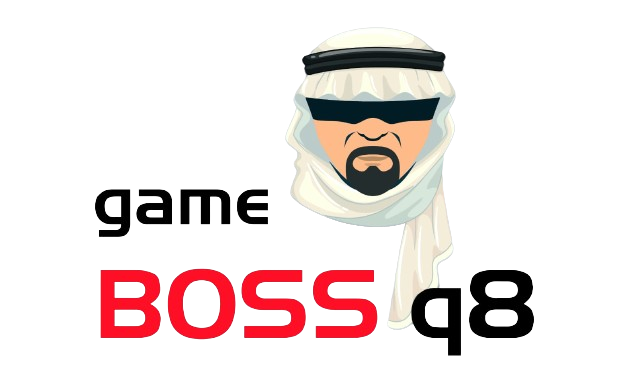Symbols have been integral to human societies for thousands of years, serving as visual representations of identity, beliefs, and social structures. In both historical and contemporary contexts, symbols act as a universal language that transcends spoken words, enabling complex communication across cultures and eras. From the intricate coats of arms of medieval Europe to the minimalist icons of today’s digital interfaces, the evolution of symbols reflects humanity’s ongoing quest to convey meaning efficiently and powerfully.
- 1. Introduction: Understanding Symbols and Their Significance
- 2. The Origins of Symbols: Heraldry and Cultural Identity
- 3. The Transition from Heraldry to Broader Symbolic Systems
- 4. Modern Evolution: Symbols in Entertainment and Digital Media
- 5. Le Zeus: A Contemporary Example of Mythology in Digital Entertainment
- 6. The Impact of Technology on Symbol Evolution
- 7. Non-Obvious Dimensions of Symbol Evolution
- 8. Future Trends: The Continuing Transformation of Symbols
- 9. Conclusion: The Interconnected Journey of Symbols from Heraldry to Modern Entertainment
1. Introduction: Understanding Symbols and Their Significance
In essence, a symbol is a visual or conceptual marker that encapsulates complex ideas, values, or identities. Historically, symbols served as a means of identification and communication before widespread literacy, acting as visual shorthand for allegiance or beliefs. Today, symbols continue to shape our perceptions, whether through national flags, corporate logos, or emojis in digital messaging.
The significance of symbols lies in their ability to foster shared understanding and cultural cohesion. They function as visual language tools that convey allegiance, authority, or cultural narratives instantly. For example, a national emblem like the American eagle or the British Union Jack instantly communicates a sense of nationhood, much like ancient heraldic shields identified noble families on the battlefield.
From ancient times to the digital age, the form and function of symbols have evolved dramatically. The transition from heraldic devices to digital icons illustrates how symbols adapt to changing technological and cultural landscapes, maintaining their core communicative power while adopting new forms and meanings.
2. The Origins of Symbols: Heraldry and Cultural Identity
During medieval Europe, heraldry emerged as a system of visual identification for noble families, knights, and monarchs. Heraldic symbols—shields, crests, and banners—served to distinguish allies in battle and to establish social hierarchy. These symbols often included animals, geometric shapes, and mythological creatures, each carrying specific meanings and associations.
For example, a lion might symbolize courage and strength, while a dove could represent peace. These images conveyed not only family lineage but also territorial claims and societal status, reinforcing social structures through visual cues.
A typical heraldic shield might include a field (background), charges (symbols), and a motto. These elements worked together to tell a story about the family’s history, values, and alliances, making heraldic symbols a form of visual storytelling rooted in cultural identity.
Examples of Heraldic Symbols and Their Meanings
| Symbol | Meaning | Example |
|---|---|---|
| Lions | Courage, nobility | Royal coats of arms, such as England |
| Eagles | Power, sovereignty | United States seal |
| Dragons | Protection, wisdom | Welsh heraldry |
3. The Transition from Heraldry to Broader Symbolic Systems
As societies evolved, the prominence of heraldic symbols declined, giving way to national emblems and broader symbolic systems that aimed to unify larger populations. The decline was driven by increased literacy, centralized governments, and the need for standardized national identities.
During the 18th and 19th centuries, symbols like flags, seals, and national coats of arms became central tools for state representation. These symbols extended beyond aristocratic families to encompass entire nations, serving as rallying points during conflicts, celebrations, and diplomatic exchanges.
Simultaneously, religious and artistic symbols gained importance. Religious icons, such as crosses and mandalas, conveyed spiritual authority, while artists used symbolic motifs to communicate complex narratives in paintings and sculptures. This expansion of symbolism enriched cultural heritage, fostering storytelling and collective memory.
Cultural Heritage and Storytelling Influences
Symbols became integral to cultural heritage, often encapsulating mythological stories, historical events, and societal values. For example, national flags often incorporate elements from historical coats of arms, blending tradition with modern identity, thus reinforcing a shared cultural narrative that persists through generations.
4. Modern Evolution: Symbols in Entertainment and Digital Media
In contemporary society, symbols have become central to branding, marketing, and popular culture. Companies leverage iconic logos—like Apple’s bitten apple or Nike’s swoosh—to evoke specific emotions and associations, making branding a form of visual storytelling.
Technological advances, especially the advent of the internet and digital media, have transformed how symbols are created, disseminated, and interpreted. The introduction of HTML5, mobile gaming, and social media platforms has expanded the reach and complexity of symbolic communication.
A notable example is the use of mythological symbols and narratives in modern entertainment. For instance, video games often incorporate ancient gods and mythic themes to deepen storytelling and engage audiences on a symbolic level. This blending of old and new exemplifies how symbols evolve yet retain their core meanings.
5. Le Zeus: A Contemporary Example of Mythology in Digital Entertainment
Modern digital entertainment frequently draws upon mythological symbols to enrich narratives and create immersive worlds. the Le Zeus release exemplifies this trend by integrating themes from Greek mythology—such as Mount Olympus and Olympian gods—into its game design and storytelling.
In these games, ancient symbols are paraphrased and reinterpreted to fit contemporary thematic elements, often post-2022, where game developers employ creative naming conventions and thematic paraphrasing to enhance player engagement. This practice demonstrates how ancient symbols are adapted to resonate with modern audiences while maintaining their mythic essence.
For example, references to Mount Olympus serve not only as a geographical marker but also as a symbol of divine authority and epic conflict, echoing their original mythological significance within a new interactive context.
6. The Impact of Technology on Symbol Evolution
Technological progress has revolutionized the scope and complexity of symbols. From static logos to dynamic, animated icons, the visual language of symbols now accommodates interactivity, immersion, and user engagement. This evolution is particularly evident in mobile gaming, where symbols serve as both functional UI elements and thematic storytelling devices.
The introduction of HTML5, in particular, has been pivotal. It enabled developers to create rich, interactive experiences directly in web browsers, allowing symbols to become more than mere images—they became part of an immersive narrative experience. For example, animated icons and interactive mythological motifs deepen the player’s connection with the game’s mythic themes.
This shift from static images to interactive representations reflects a broader trend toward experiential engagement, where symbols are no longer just visual markers but active participants in storytelling and gameplay.
7. Non-Obvious Dimensions of Symbol Evolution
Beyond their obvious visual and narrative functions, symbols also carry psychological and cultural implications. In branding, for instance, certain symbols evoke subconscious associations—trust, strength, or innovation—that influence user engagement and loyalty.
Cultural reinterpretation of symbols over time illustrates their adaptability. An ancient symbol might be repurposed to align with modern values or aesthetics, ensuring its relevance across generations. This process often involves paraphrasing—rephrasing or recontextualizing symbols—to fit new narratives and audiences.
“Symbols are living entities, continuously reinterpreted and redefined by cultural shifts and technological innovations.”
8. Future Trends: The Continuing Transformation of Symbols
Emerging technologies such as augmented reality (AR) and virtual reality (VR) promise to further transform symbolic communication. In these immersive environments, symbols can become interactive and personalized, creating deeply engaging experiences that blend mythological and cultural motifs with user participation.
Artificial intelligence (AI) also plays a growing role in creating and interpreting symbols. AI-driven design tools can generate new symbols tailored to specific contexts, while deep learning algorithms help decode the symbolic language embedded in cultural artifacts or digital content.
Mythological symbols—like those associated with Le Zeus—are expected to retain their relevance, serving as archetypes in future media. Their enduring power lies in their universal themes of heroism, divine authority, and epic conflict, which continue to resonate across generations and technological eras.
9. Conclusion: The Interconnected Journey of Symbols from Heraldry to Modern Entertainment
The journey of symbols—from the heraldic shields of medieval Europe to the dynamic icons of today’s digital worlds—illustrates their fundamental role in human history. They act as bridges connecting past and present, tradition and innovation, forming a visual language that evolves yet remains rooted in shared human experiences.
Understanding this evolution enriches our cultural literacy, enabling us to appreciate how ancient motifs are repurposed and reinterpreted in contemporary contexts. For instance, modern entertainment platforms incorporate mythological symbols—like those seen in the the Le Zeus release—as a testament to their timeless appeal and adaptability.
“Symbols endure because they encapsulate universal truths, constantly reimagined to reflect our evolving cultural landscape.”
In conclusion, the ongoing transformation of symbols underscores their vital role in shaping human perception and storytelling. As technology advances and cultural paradigms shift, symbols will continue to adapt, ensuring their relevance in the digital age and beyond.




